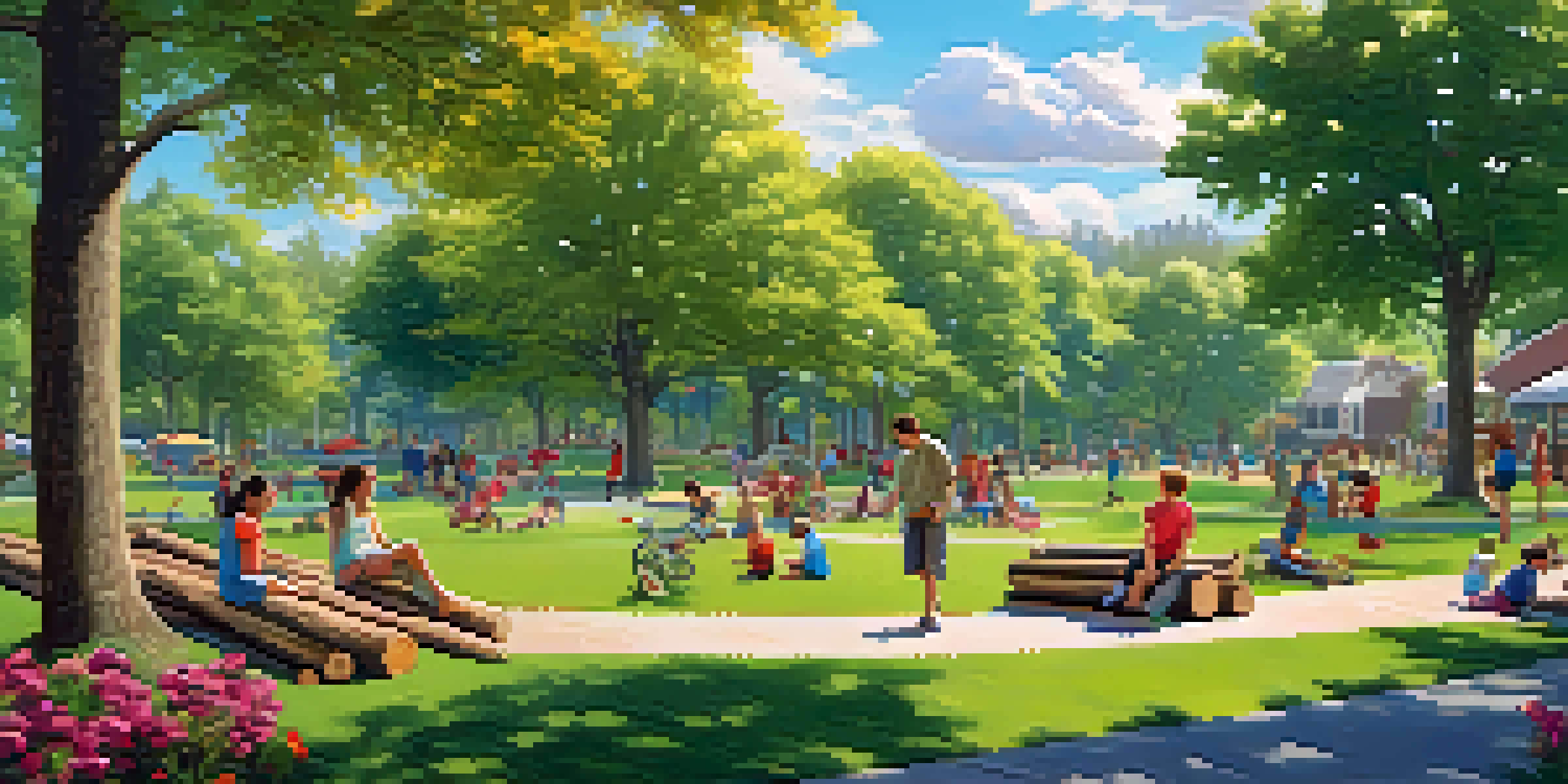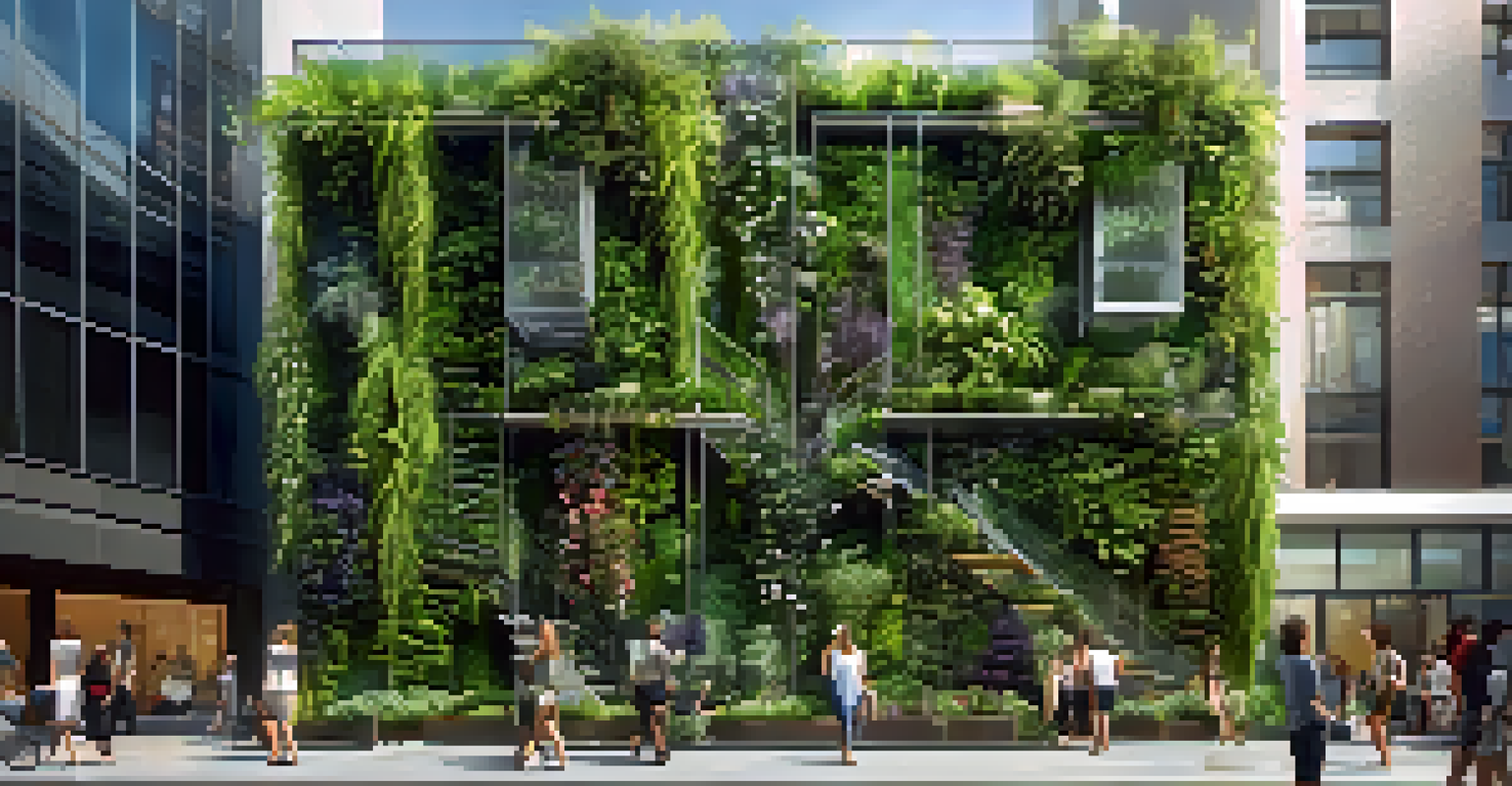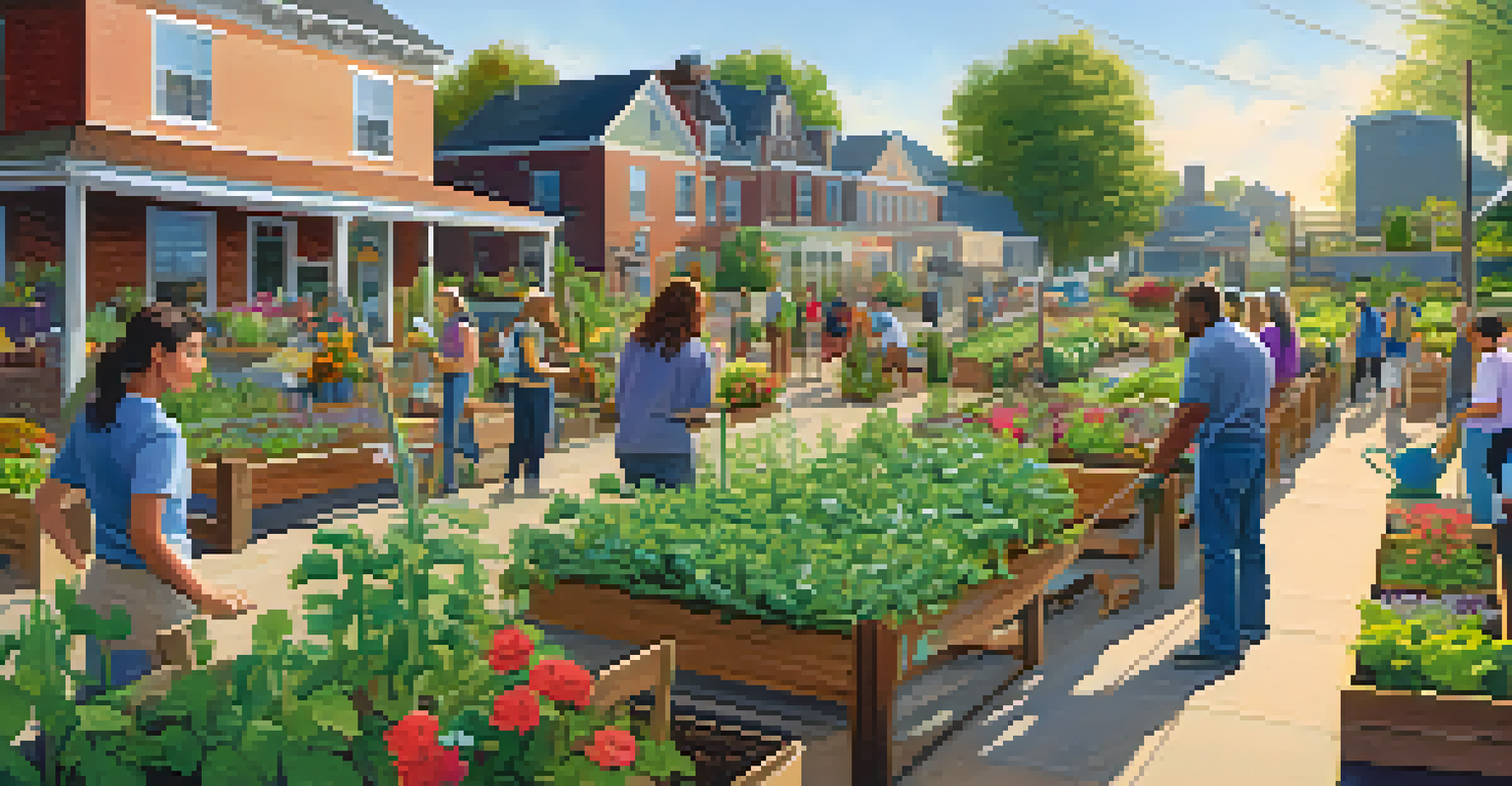Biophilia and Urban Living: Finding Nature in Cities

Understanding Biophilia: A Natural Connection
Biophilia is the innate human affinity for nature and living things. It suggests that our connection to nature is not just a preference but a biological necessity. This concept plays a crucial role in how we design and experience urban environments.
Nature does not hurry, yet everything is accomplished.
In cities dominated by concrete and steel, finding ways to nurture this connection can enhance our well-being. Think of it as a thirst for fresh air and greenery amidst the hustle and bustle of urban life. By incorporating elements of biophilia, cities can foster a healthier and happier populace.
As urban planners and architects embrace biophilia, they create spaces that invite nature into our daily lives. From parks to green rooftops, these designs serve as soothing oases, reminding us of our roots and the natural world.
The Benefits of Biophilic Design in Cities
Integrating nature into urban design brings a multitude of benefits. Studies have shown that access to green spaces can reduce stress, improve mood, and even boost productivity. Imagine taking a break from work to stroll through a lush park—it's rejuvenating!

Biophilic design can also enhance biodiversity within urban landscapes. By planting native trees and creating habitats for wildlife, cities can support local ecosystems. This not only beautifies the environment but also fosters a sense of community and connection to nature.
Biophilia Enhances Urban Well-Being
Integrating natural elements into urban design significantly improves residents' mental health and overall quality of life.
Moreover, incorporating nature into city living can improve air quality and reduce heat, making urban areas more livable. As cities grow, these strategies become essential for ensuring a sustainable and healthy environment for future generations.
Urban Green Spaces: A Breath of Fresh Air
Urban green spaces, like parks and gardens, serve as vital lungs for our cities. They provide a much-needed escape from the concrete jungle, offering residents a place to relax, exercise, and connect with others. Just picture a sunny day with children playing and families picnicking—pure bliss!
Look deep into nature, and then you will understand everything better.
The presence of green spaces encourages outdoor activities, which can significantly improve physical health. Whether it’s jogging along a tree-lined path or practicing yoga in a serene garden, these spaces promote an active lifestyle that benefits both body and mind.
Additionally, green spaces can enhance community bonds. They act as gathering spots where neighbors meet, socialize, and build friendships, creating a sense of belonging that is often lacking in urban life.
Vertical Gardens: Nature at New Heights
Vertical gardens are a stunning example of biophilic design, allowing nature to thrive in limited urban spaces. These living walls not only beautify buildings but also contribute to improved air quality and insulation. Imagine walking past a colorful vertical garden—it's like a breath of fresh air!
These gardens can be incorporated into both residential and commercial buildings, making them versatile for various settings. They can transform bland facades into vibrant works of art while fostering an appreciation for nature within the urban context.
Green Spaces Foster Community Bonds
Urban green spaces and community gardens create opportunities for social interaction, promoting a sense of belonging among residents.
Moreover, vertical gardens can serve as educational tools, teaching city dwellers about plant life and sustainability. By engaging with these living structures, people can learn to appreciate the importance of greenery in our lives.
Community Gardens: Cultivating Connections
Community gardens are another fantastic way to bring nature into urban living. These shared spaces allow residents to grow their own fruits, vegetables, and flowers while fostering a sense of community. Picture neighbors working together to cultivate a vibrant garden—it’s a beautiful sight!
Not only do community gardens provide fresh produce, but they also promote social interaction and collaboration. They can serve as gathering places where people share knowledge, skills, and resources, creating strong social networks.
Furthermore, gardening has therapeutic benefits, reducing stress and promoting mental health. Engaging with the earth and witnessing the fruits of one’s labor can be incredibly rewarding, making community gardens a win-win for urban dwellers.
Nature-Based Playgrounds: Fun Meets Function
Nature-based playgrounds are revolutionizing how children interact with their environment. These innovative play spaces incorporate natural elements like logs, rocks, and trees, encouraging creative play and exploration. Imagine kids climbing trees and building forts—it’s pure childhood magic!
These playgrounds not only provide entertainment but also promote physical activity and help develop important skills. Climbing, balancing, and exploring natural terrains enhance motor skills and foster resilience in children.
Nature-Based Design for Future Cities
Embracing biophilic design in urban planning is essential for creating sustainable, resilient cities that prioritize both people and the planet.
Additionally, nature-based playgrounds instill a love for the outdoors from a young age. By encouraging children to connect with nature, we nurture future generations who value and protect the environment.
The Future of Urban Living: A Natural Vision
As urbanization continues to rise, the need for biophilic design in cities becomes increasingly crucial. The future of urban living hinges on our ability to harmonize nature with modern architecture. Imagine cities where nature and man-made environments coexist in perfect balance—it’s a vision worth pursuing.
Innovative solutions such as green roofs, urban farms, and wildlife corridors are paving the way for a more sustainable future. These ideas not only enhance aesthetics but also contribute to ecological health, creating cities that are resilient and adaptive.

Ultimately, embracing biophilia in urban living can transform our cities into thriving ecosystems. By prioritizing nature, we can cultivate healthier, happier communities that benefit both people and the planet.